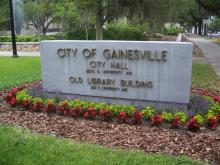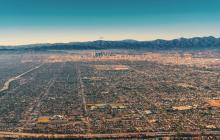Gainesville, Florida City Commissioners Set to Vote on Fiber-Ade
A milestone moment is on the horizon for the north central Florida city where Gatorade was invented to rejuvenate Florida Gator athletes with electrolytes. Tomorrow night, the Gainesville City Commission was slated to discuss how the city will spend its $32 million in American Rescue Plan funds and how much of that should be poured into rejuvenating Gainesville’s digital landscape with fiber-fueled gigabits. (The meeting however was postponed today due to COVID-19 concerns and will likely be rescheduled in the comings weeks).
With city, county, and school officials in April having unanimously approved the development of “a plan to create Internet access for all people” in Alachua county, in the county seat Gainesville’s city manager has requested city commissioners approve using $12 million of those federal funds for the city’s utility company, Gainesville Regional Utility (GRU), to extend its existing fiber network to residents thirsty for reliable, affordable, high-speed Internet service.
Citizen’s Group with High Speed Hopes
“We have been working on this for years and this could be the last chance for us to get this started,” Connected Gainesville founder Bryan Eastman told ILSR in a recent interview.
The city’s utility company, Gainesville Regional Utility (GRU), has already deployed over 600 miles of fiber throughout the city and for the past two decades its subsidiary GATOR NET has been offering symmetrical gig speed service to area businesses, apartment buildings, government agencies, and community anchor institutions.
In 2017, Connected Gainesville began a public campaign with the hopes of persuading city officials to bring fiber-to-the-home connectivity citywide in a market dominated by Cox Communications, the incumbent monopoly cable provider serving this city’s approximately 141,000 residents, 56,000 of whom are students attending the University of Florida.



